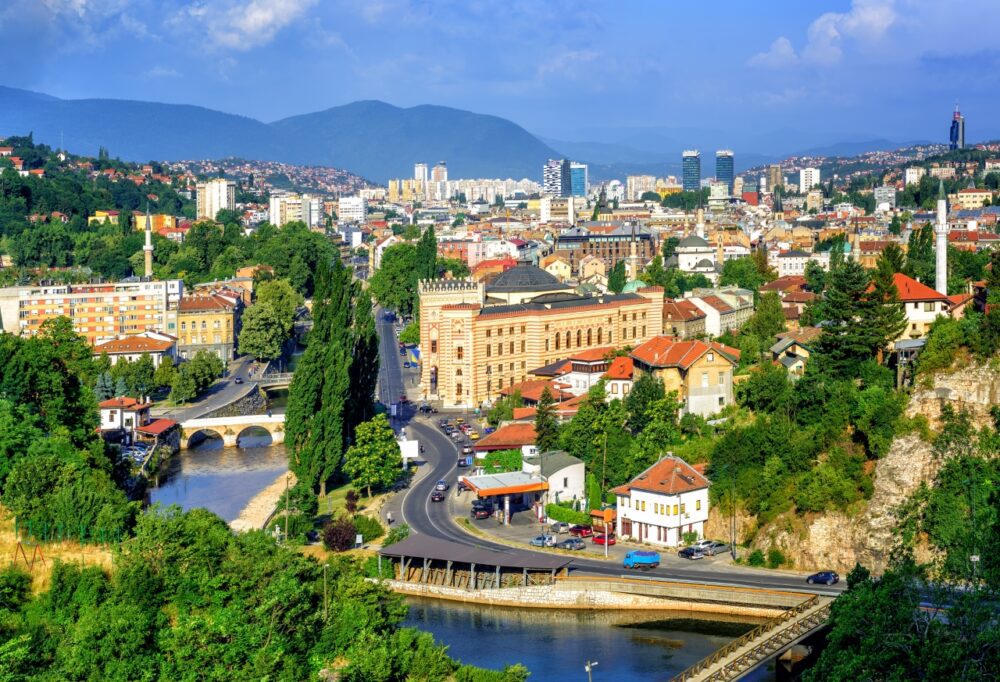
Sarajevo, the capital of Bosnia and Herzegovina, is a city like no other, where East meets West in the most captivating way. Known for its rich history, multicultural atmosphere, and stunning mountain backdrop, Sarajevo offers a mix of charm and resilience. Whether you’re exploring the cobbled streets of Baščaršija, visiting the historic Latin Bridge, or savouring a cup of Bosnian coffee, this city is full of unforgettable experiences. But with so many fascinating cities in the Balkans, you might wonder: is Sarajevo worth visiting? In this post, we’ll uncover what makes Sarajevo unique and help you decide if it’s the right destination for your next adventure.
Table of Contents
Pros – Reasons You Should Visit Sarajevo
1. A Unique Blend of Cultures and Histories
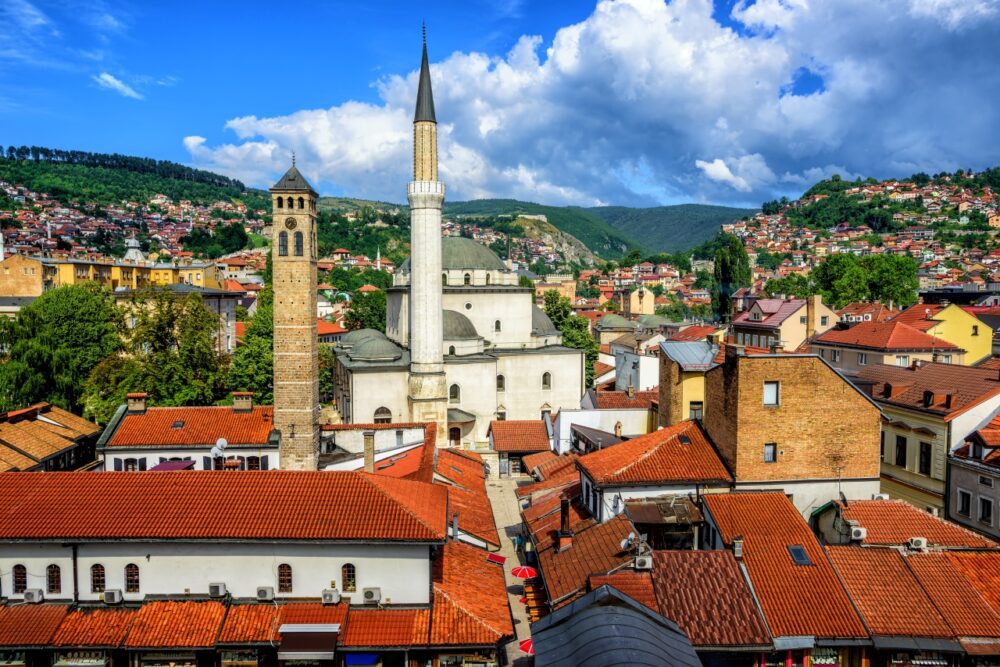
Sarajevo is often called the “Jerusalem of Europe” because of its fascinating mix of religions, cultures, and architectural styles. The city has been influenced by the Ottomans, Austro-Hungarians, and Yugoslav eras, creating a rich and diverse cultural identity. Within a short walk, you can see mosques, Catholic and Orthodox churches, and even a synagogue, all coexisting in the same neighborhoods.
I was amazed by how seamlessly different influences blended together. Walking through Baščaršija, the old Ottoman bazaar, felt like stepping into Istanbul, while a few blocks away, the grand Austro-Hungarian buildings reminded me of Vienna. Sarajevo’s ability to maintain its multicultural character while preserving its history makes it one of the most unique cities in Europe.
2. An Affordable Destination with Great Value for Money
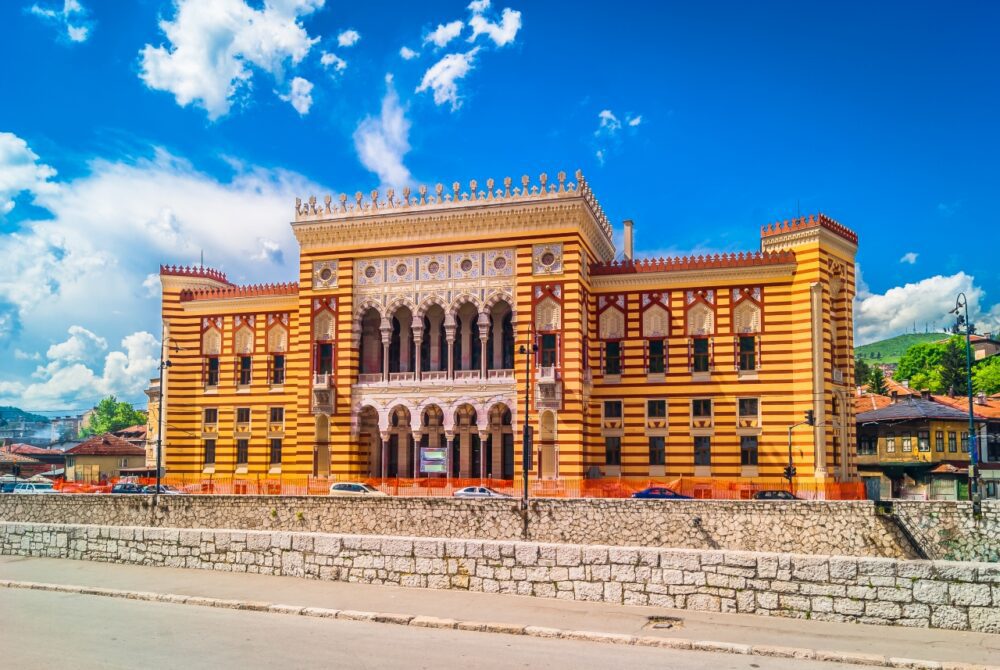
Compared to other European capitals, Sarajevo is very budget-friendly. Accommodation, food, transportation, and attractions are all significantly cheaper than in Western Europe, making it an ideal destination for travelers looking to experience a rich cultural city without breaking the bank.
I stayed in a comfortable guesthouse near the city center for a fraction of what I would have paid in more well-known destinations. Meals at traditional restaurants were incredibly affordable, and a full meal—including cevapi, a local grilled meat dish—cost less than what I would typically spend on a sandwich in Paris. Even museum and transport costs were minimal, proving that Sarajevo offers incredible value.
3. A Fascinating and Complex History
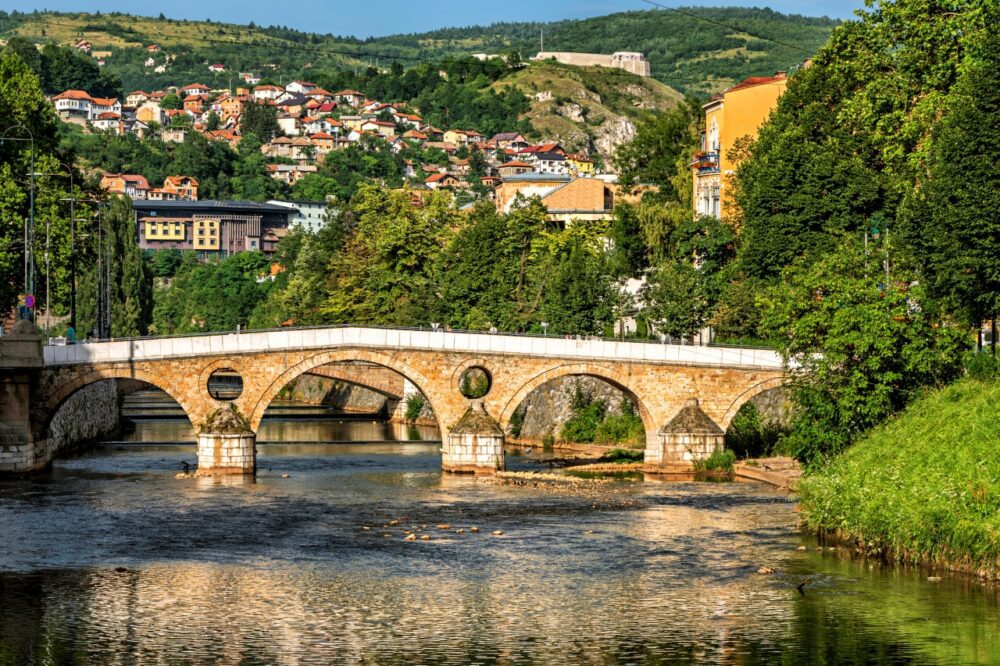
Sarajevo has been at the center of major historical events, from the assassination of Archduke Franz Ferdinand, which sparked World War I, to the siege of Sarajevo in the 1990s. The city’s history is both tragic and fascinating, and many sites offer deep insight into its past.
I visited the Latin Bridge, where the infamous assassination took place, and then walked to the Tunnel of Hope, which played a crucial role in Sarajevo’s survival during the war. The contrast between historical grandeur and recent scars makes Sarajevo an emotionally powerful place to explore. If you’re interested in history, Sarajevo provides an unforgettable lesson in resilience and survival.
4. Stunning Natural Beauty Surrounding the City
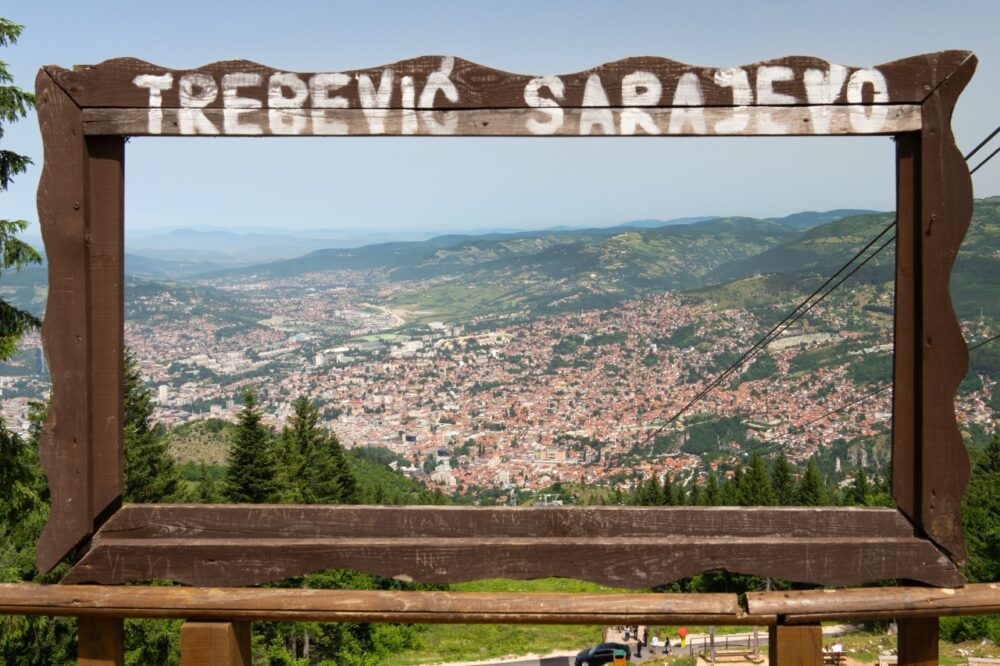
Sarajevo is nestled in a valley surrounded by rolling green hills and towering mountains. The scenery is breathtaking, and whether you’re standing in the middle of the city or taking a short trip outside, you’re always close to nature.
I took a short ride up to the Trebević Mountain, where I found abandoned Olympic bobsled tracks from the 1984 Winter Games covered in colorful graffiti. The views of the city from the top were spectacular, and the hike down through the forest was peaceful and refreshing. Sarajevo’s mix of urban and natural landscapes makes it an excellent destination for travelers who enjoy both city exploration and outdoor adventures.
5. Warm and Welcoming Locals
Sarajevans are known for their hospitality and kindness, making visitors feel genuinely welcome. Despite the hardships the city has endured, the people remain open-hearted, friendly, and eager to share their culture with outsiders.
I experienced this warmth firsthand when I got lost in a small alleyway and asked for directions. Not only did the shopkeeper stop what he was doing to help me, but he also invited me in for a coffee and a chat about Sarajevo’s history. The generosity of the locals makes visiting Sarajevo an even more rewarding experience.
6. Traditional Bosnian Cuisine is Delicious and Hearty
Bosnian food is flavorful, filling, and influenced by both Ottoman and Central European traditions. Meat lovers will appreciate dishes like cevapi (grilled minced meat sausages served with flatbread and onions), burek (flaky pastry filled with meat, cheese, or potatoes), and Bosnian-style stuffed peppers. For those with a sweet tooth, Sarajevo’s bakeries serve fantastic baklava and tufahija, a poached apple dessert.
I stopped at a local ćevabdžinica (grill house) and ordered a plate of cevapi with fresh somun bread. It was simple but bursting with flavor, and paired perfectly with a glass of refreshing yogurt drink. Dining in Sarajevo is an experience in itself, with generous portions, affordable prices, and a focus on traditional, homemade flavors.
7. A Coffee Culture That Rivals Italy and Turkey
Sarajevo has one of the strongest coffee cultures in Europe, with a deep-rooted tradition of drinking thick, strong Bosnian coffee, similar to Turkish coffee but prepared with its own unique touch. Coffee in Sarajevo is not just a drink—it’s a ritual meant to be enjoyed slowly, often accompanied by a cube of sugar and a piece of lokum (Turkish delight).
I sat at a small café in Baščaršija, where I watched locals carefully preparing their coffee in copper džezvas (small pots). The rich aroma, the slow pouring, and the relaxed pace made it clear that Bosnian coffee is meant to be savored, not rushed. If you love café culture, Sarajevo offers one of the most authentic and enjoyable experiences in Europe.
8. The Vibrant and Lively Baščaršija Market
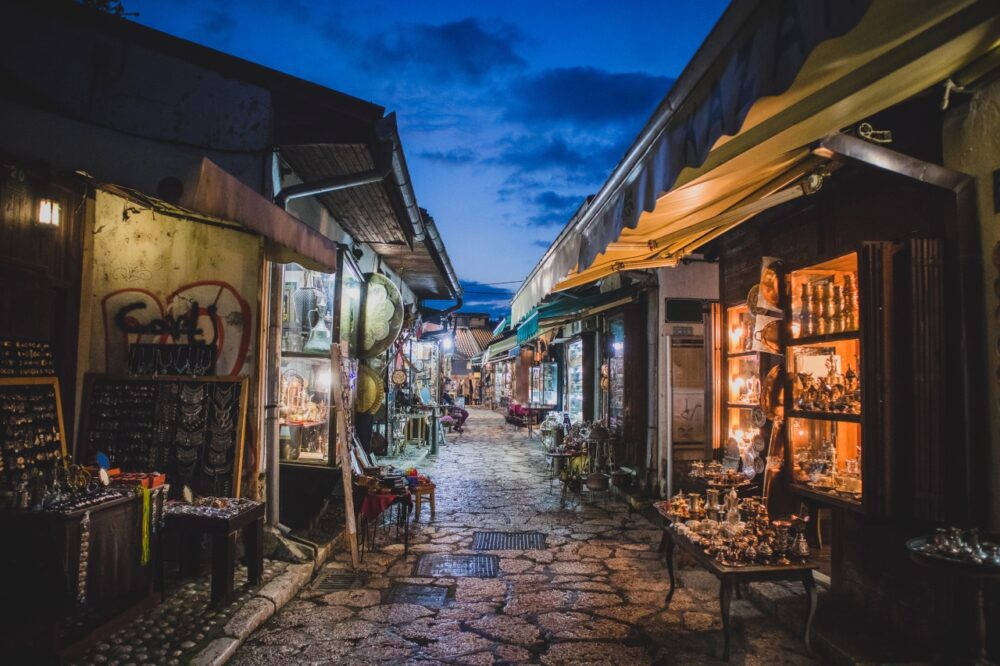
Sarajevo’s old bazaar, Baščaršija, is the heart of the city, filled with narrow streets lined with artisan shops, traditional restaurants, and historic landmarks. It’s the best place to experience Sarajevo’s Ottoman heritage and find unique souvenirs, from handmade copper coffee sets to intricate filigree jewelry.
I spent hours wandering through the bazaar, watching craftsmen at work and sampling local delicacies. The sound of call to prayer from nearby mosques, the smell of grilled meat, and the sight of colorful carpets hanging outside shops created a sensory experience unlike any other. Baščaršija isn’t just a tourist attraction—it’s a living, breathing part of Sarajevo’s culture.
9. A City That’s Safe and Easy to Explore
Despite its complicated past, Sarajevo today is a very safe and welcoming city. Crime rates are low, and the city is easy to navigate on foot or by tram. Most major attractions are within walking distance, and the hilly landscape provides plenty of great viewpoints without needing to travel far.
I felt completely comfortable walking through the city, even at night. The locals were always friendly, and there was a relaxed, laid-back atmosphere everywhere I went. If you’re looking for an affordable and walkable European city where you can explore without stress, Sarajevo is an excellent choice.
10. A Unique and Unforgettable Travel Experience
Sarajevo is unlike any other city in Europe. It doesn’t have the grandeur of Paris or the modern shine of London, but what it offers is something far more rare—authenticity, resilience, and a deep cultural richness. Every street tells a story, and every corner holds a piece of history.
As I sat on a hillside overlooking the city at sunset, listening to the call to prayer echo through the valley while church bells rang in the distance, I realized that Sarajevo is a place that stays with you long after you leave. It’s not just a destination—it’s an experience that leaves a lasting impression on anyone who visits.
Cons – Things to Consider When Visiting Sarajevo
1. The City is Still Healing from Its Recent Past
Sarajevo is a city of resilience, but the scars of its past are still visible. The Siege of Sarajevo, which lasted from 1992 to 1996, left lasting damage, and while much of the city has been rebuilt, reminders of the war remain. Bullet-riddled buildings, abandoned structures, and the haunting Sarajevo Roses—marks in the pavement filled with red resin to honor those killed—serve as constant reminders of the conflict.
I visited the Sarajevo Tunnel Museum, which tells the story of how the city survived under siege. It was a powerful and emotional experience, offering a glimpse into the struggles the people of Sarajevo endured. While the city is safe and welcoming today, visitors should be mindful that for many locals, the war is not just history—it’s a lived experience. Conversations about the past can be sensitive, and it’s important to approach them with respect.
2. The Public Transportation System is Limited and Outdated
Sarajevo’s public transport system consists mainly of trams, trolleybuses, and minibuses, but it can be unreliable and somewhat confusing for visitors. Many of the trams and buses are old, dating back to the Yugoslav era, and schedules are not always accurate. In some areas, stops are not clearly marked, and there are few English-language signs, making it difficult for first-time visitors to navigate.
I took the tram from Baščaršija to the newer part of the city, and while it was a unique experience riding in one of the old Soviet-style trams, it wasn’t the most comfortable journey. The system works well enough for getting around the central areas, but for reaching places like the mountains or surrounding towns, taxis or private transport are often necessary. If you’re planning to explore beyond the city center, expect some logistical challenges.
3. The Hills and Steep Streets Can Be Physically Demanding
Sarajevo is built in a valley, surrounded by steep hills, which makes for stunning views but also challenging walking conditions. Many of the city’s most scenic spots, like the Yellow Fortress and the abandoned bobsled track on Trebević Mountain, require uphill climbs. While public transport or taxis can help with some routes, many of the best areas to explore require walking up steep, winding streets.
I made the trek up to the Yellow Fortress for sunset, and while the view was absolutely worth it, I underestimated how tiring the walk would be. The cobblestone streets can also be uneven, which makes walking more difficult, especially for those with mobility issues. Comfortable shoes are a must, and if you struggle with steep inclines, using taxis for uphill journeys might be a good idea.
4. The Infrastructure Can Feel Worn and Underdeveloped in Some Areas
While Sarajevo has modernized significantly in the past two decades, some parts of the city still feel underdeveloped, particularly when it comes to infrastructure. Roads can be uneven, sidewalks are sometimes in poor condition, and certain neighborhoods still show signs of post-war neglect. Power outages and water supply issues, while not common, can occasionally happen.
I noticed this when walking outside of the main tourist areas—some streets had potholes, and buildings in residential areas looked worn down compared to the restored Old Town. While the city is safe and friendly, some areas feel like they are still in transition. Sarajevo’s charm lies in its authenticity, but travelers expecting a polished, Western European-style capital might find certain aspects of the city rough around the edges.
5. Winters Can Be Harsh, and Air Pollution Can Be a Problem
Sarajevo experiences cold and snowy winters, which can make travel more challenging, especially for those who aren’t used to icy conditions. The city is beautiful under a blanket of snow, but walking on steep, slippery streets can be difficult, and certain attractions, particularly those in the surrounding mountains, may be harder to access.
In addition to the cold, Sarajevo struggles with air pollution in winter due to its location in a valley. The combination of traffic emissions, industrial activity, and wood-burning for heating can cause smog to build up, leading to poor air quality on some days. I visited in December, and while the festive atmosphere was charming, the haze over the city was noticeable. If you have respiratory issues, checking air quality reports before visiting in winter is a good idea.
When to Visit Sarajevo
The best times to visit Sarajevo are spring (April to June) and autumn (September to October), when the weather is mild and the city’s parks and hills are at their most vibrant. Summer (July to August) offers warm days and a lively atmosphere, with outdoor cafes buzzing and festivals like the Sarajevo Film Festival drawing international crowds. Winter (December to February) transforms the city into a snowy wonderland, and nearby ski resorts like Jahorina and Bjelašnica are excellent for winter sports enthusiasts.
How to Get to Sarajevo
Sarajevo International Airport (SJJ) is the primary gateway to the city, located about 10 kilometres from the centre. Airlines like Turkish Airlines, Lufthansa, and Austrian Airlines connect Sarajevo to major European hubs. From the airport, taxis and ride-hailing apps like Bolt offer convenient transfers, while public buses connect to the city centre affordably. Sarajevo is also accessible by international buses and trains from neighbouring countries, with scenic routes through the Balkans adding to the charm.
Where to Stay in Sarajevo
Sarajevo offers a range of accommodation options to suit all budgets and preferences:
- Luxury: City Centre or Old Town (Baščaršija) – Stay at Hotel Europe, a historic five-star property with Ottoman and Austro-Hungarian influences, or Courtyard by Marriott Sarajevo, a modern choice with excellent amenities.
- Mid-range: Around Baščaršija – Try Hotel President Sarajevo, combining comfort and location, or Hotel Astra Garni, a boutique option near the Old Town.
- Budget: Residential Areas or Hostels – Consider Hostel Franz Ferdinand, offering a sociable atmosphere with private and shared rooms, or Guesthouse Halvat, a cosy, affordable option with local charm.
Getting Around Sarajevo
Sarajevo is a compact and walkable city, especially in the Baščaršija Old Town, where most attractions are within a short distance. For longer journeys, the city’s tram and bus network is affordable and reliable. Tickets can be purchased at kiosks or on board. Taxis are widely available but should be pre-arranged to avoid overcharging. Cycling is becoming more popular, with bike rentals available, though the city’s hilly terrain can be challenging. For a scenic experience, the Sarajevo Cable Car offers stunning views of the city and surrounding mountains.
How Long to Spend in Sarajevo
Three days is ideal to explore Sarajevo’s rich history and culture. Spend the first day in Baščaršija, visiting landmarks like the Gazi Husrev-beg Mosque, the Latin Bridge, and the Sebilj Fountain, followed by a traditional Bosnian meal. On the second day, visit the Tunnel of Hope Museum to learn about the city’s siege and take the cable car to Mount Trebević for panoramic views. Use the third day for a day trip to Vrelo Bosne, a peaceful natural spring, or nearby towns like Mostar. Sarajevo’s blend of East and West, resilience, and vibrant atmosphere make it an unforgettable destination.
Conclusion
So, is Sarajevo worth visiting? Absolutely! If you’re drawn to a city with a complex history, diverse culture, and warm hospitality, Sarajevo is a must-visit. Its blend of Ottoman, Austro-Hungarian, and modern influences creates a unique vibe that few other cities can match. While its scars from the past are still visible, Sarajevo’s resilience and beauty make it a profoundly moving and enriching destination. For travellers seeking an off-the-beaten-path experience full of history and soul, Sarajevo is a city that will leave a lasting impression.
